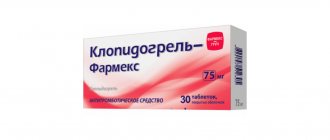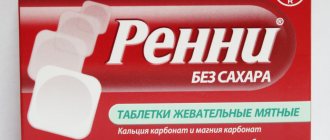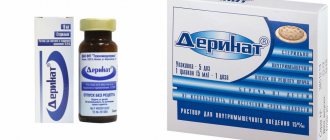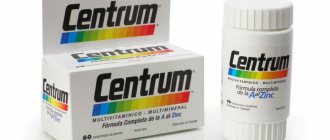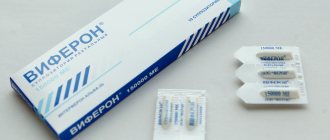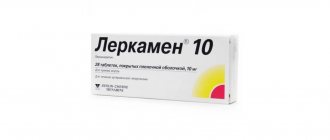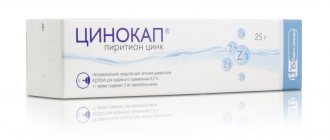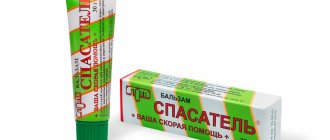Bloating, heaviness and colic in the abdomen are often associated with the active release of gas, the molecules of which put pressure on the gastrointestinal tract and cause discomfort. To quickly relieve symptoms, use effective remedies, for example, Sub Simplex. The drug only comes into physical contact with gas bubbles and does not react chemically. Thanks to this, it can be used at any age, including given to newborns.
Why does my baby have colic? The reasons for this condition
The causes of colic in newborns are poorly understood, but they are thought to be related to the following:
- baby's intestinal spasms;
- air entering the esophagus during feeding or crying;
- allergies;
- lack of nutrition;
- digestive problems;
- lactose intolerance.
Foods that cause gas formation should be excluded from the child’s diet: chocolate, cocoa, coffee, legumes, fresh vegetables and fruits, sauerkraut, bananas, baked goods, muffins. A newborn baby may experience abdominal colic if a nursing mother consumes the listed products. Source: N.I. Ursova Infantile intestinal colic. Modern data // Issues of modern pediatrics, 2011, v. 10, no. 2, p. 125-131
How to understand that a baby has colic: symptoms of intestinal problems
Colic in children can be expressed in bouts of crying (they often occur in the evening), tension and bloating in the abdomen, tightening of the knees, arching of the whole body, redness of the face, and refusal to eat. Usually, with colic, a child does not calm down if you pick him up and rock him to sleep. Breastfeeding can have an effect, but not for long, usually after the end of milk intake, the baby continues to cry.
Colic can also manifest itself as:
- anxiety for no reason;
- difficulty with stool;
- sharp cries during feeding;
- flatulence.
Often colic is accompanied by acne, similar to teenage ones. This is due to the fact that during the period of colic, the mother’s hormones received in the womb leave the child’s body. Hormonal balance is disrupted.
Colic medications
For severe and very painful colic, special medications are also applicable, but only after the appointment of a specialist. It is the doctor who will competently select the optimal drug for the baby. The following list of effective drugs is recognized as the most effective drugs:
- Capsules or suspension Espumisan L Refers to effective carminative drugs. There are three types in the Espumisan line, but you should pay attention only to the medicine for newborns. Espumisan can be given to a child from the first day of life. The product will effectively relieve colic and help remove gases. The product has a pleasant banana taste, so giving it to your baby is not a problem at all. The first dose is 25 drops and can be mixed with breast milk or given alone.
- Suspension Sab Simplex The drug removes and destroys gas globules and carefully removes them from the baby’s body during intestinal peristalsis. The product will perfectly eliminate colic and is absolutely safe for the baby.
- Bobotik drops The advantage is that the drug is not absorbed into the gastrointestinal tract and comes out unchanged, while perfectly relieving the baby of colic. The drug does not contain sugars and is suitable for addition to formula or breast milk. One bottle contains 50 doses of medicine, so the product will last for a long time.
- Plantex powder The product is designed to combat colic and is extremely popular among parents. The drug is made from fennel fruit and works on the principle of dill water. The drug perfectly accelerates the release of gases and improves gastrointestinal motility. The advantage is that it regulates the digestive system and increases the baby’s appetite.
- Infacol suspension Facilitates the release of gases from the intestines, relieves spasms and reduces the baby’s pain. The drug does not have a systemic effect and is excreted unchanged from the child’s body. Can be taken from the first weeks of life. The course of the drug is determined by a specialist.
- Bebinos Drops Has a pronounced antispasmodic and carminative effect, helps with flatulence, colic and pain. Developed on the basis of plant extracts, in particular fennel and chamomile. The drug has an anti-inflammatory effect and relieves pain, carefully normalizing the functioning of the gastrointestinal tract. The product improves digestion and peristalsis.
- Bifiform baby suspension Eliminates intestinal colic and fights pathogenic organisms. It is a means of heavy artillery. The suspension perfectly kills microbes, but at the same time preserves bacteria beneficial to the microflora. The product reduces the risk of acute diarrhea in the baby.
- Linex capsules Restores the child's intestinal microflora, eliminates pathogenic microorganisms. The drug helps restore normal bowel function and ensures optimal action of intestinal enzymes. The drug takes care of the intestinal microflora and the normal balance of lactic acid bacteria in the gastrointestinal tract.
- Baby Calm Emulsion The product is based on vegetable oils, in particular anise, dill and fennel oil. The product acts on the principle of dill water and perfectly eliminates colic in the baby. This effective remedy for babies helps eliminate flatulence and normalize microflora. The advantage of the drug is its mild antispasmodic effect. This emulsion has a pronounced anti-inflammatory effect and antibacterial effect. Provides carminative effect.
Parents should remember that only a doctor can prescribe the appropriate drug and treatment regimen for the baby. It is worth excluding not only intolerance to certain drugs, but also allergies to components. Also, the doctor will be able to determine the optimal dose of the drug for a particular baby in accordance with the weight and age of the child.
Signs of acute colic
Usually, during an attack, the child screams shrilly and unexpectedly , and shows extreme anxiety during feeding. Until the attack ends, it is almost impossible to calm the baby down - neither motion sickness, nor changing clothes, nor regurgitation help. Source: I.A. Belyaeva Intestinal colic in newborns and infants: from diagnostic issues to differentiated correction Issues of modern pediatrics, 2011, v. 10, no. 2, pp. 137-140. Lying in bed, the child tosses and turns from side to side, clenches his fists, and may blush or turn pale. You can see a “grimace of pain” on his face. The abdominal muscles become stiff and tense, which can be felt when touched. You can see bloating in the abdomen, the child is passing gas in large quantities.
Colic as a symptom
Although in medicine it is not customary to call colic either a disease or a symptom, they do occur against the background of other diseases. That is why it is imperative to show the child to the pediatrician to rule out:
- intestinal spasm;
- intestinal obstruction;
- flatulence;
- abnormal development of the gastrointestinal tract;
- disruption of the digestion process;
- lactase deficiency;
- allergies.
Instructions for use "Sub Simplex"
The drug is taken before bedtime during meals or after that. First, the bottle is inverted and shaken several times until the suspension becomes homogeneous. Then it is turned over and tapped on the bottom.
The dosage depends on the patient's age. If there are signs of increased gas formation, it is necessary to give (one-time amount indicated):
- children from 1 year to 6 years – 15 drops;
- children from 7 to 15 years old – 21-30 drops;
- adults – from 31 to 45 drops.
The drug is taken 2-3 times a day with an interval of at least 5 hours until the symptoms of bloating completely disappear. If necessary, the indicated quantities may be slightly increased.
For newborns, the drug is given in the amount of 15 drops. Can be mixed into a bottle or given in a spoon. The aroma of vanilla and raspberries is pleasant, so taking the medicine does not cause discomfort.
The drug is also taken in preparation for various types of studies:
- X-ray – take 16-30 ml the night before.
- Ultrasound - 15 ml the day before the procedure, then in the evening and another 15 ml immediately before the start.
- Endoscopy - take 3-5 ml on the eve of the procedure. Also, during endoscopy, another 3-5 ml is taken in consultation with the doctor.
To treat the effects of taking detergents, take 5 ml. However, the dosage may be increased if the symptoms are pronounced and do not go away.
How to help a child when he is sick and what to do? Treatment methods
There is no clear treatment for colic in children, but pediatricians advise the following:
- abdominal massage after feeding;
- gymnastics (pressing your legs to your stomach);
- after feeding, you need to carry the baby upright for fifteen minutes so that he burps;
- place the baby on his stomach. Source: E.S. Keshishyan, Doctor of Medical Sciences, Professor, E.K. Berdnikova Functional intestinal colic. Tactics for their correction in young children // Medical Council, 2013, pp. 106-109
In some cases, your doctor may recommend using a special gas tube.
If the colic is severe, then a gas tube may be used.
Medical pediatricians will teach you how to properly give your baby a breast or a bottle so that he does not swallow excess air when feeding. Correcting the nutrition of a nursing mother is also important. The list of prohibited products is compiled together with the attending physician.
In some cases, doctors recommend taking medications to stabilize the child’s condition. Specific prescriptions depend on the identified causes of the child’s anxiety.
The following medications are often prescribed:
- probiotics;
- sedatives;
- medications for dysbacteriosis;
- preparations with enzymes.
What can you give a child for colic?
- Herbal carminatives.
- Enzyme preparations.
- "Espumizan" if the cause is flatulence.
- Dill decoction when colic is caused by gases.
- Herbal preparation "Plantex".
- Defoamers based on simenticon (when the cause is flatulence due to foaming in the intestines). These are “Espumizan L”, “Sab Simplex”, “Bobotik”.
- No-Spa will help relieve spasms.
- If the cause is a microflora disorder, then probiotics are given, for example Lactobacillus reuteri.
"Sub Simplex" for newborns: composition, description
The drug is a carminative drug based on the active ingredient called simethicone. Available in the form of a viscous white emulsion. Aroma with notes of raspberry and vanilla. Along with simethicone, it contains a number of auxiliary components - flavorings, sorbic acid, sodium cyclamate and others.
"Sab Simplex" helps reduce the formation of gases in the gastrointestinal tract and removes them, thereby eliminating the symptoms of bloating and flatulence in adults and children. It acts only physically - it reduces the surface tension of gas bubbles, which leads to their destruction. As a result, gases are absorbed by the intestinal wall and leave the abdominal cavity.
The active ingredient is not absorbed by the body because it is chemically inert (does not react with other substances). Therefore, it is excreted in the feces in the same form as it was received.
The product is produced in plastic bottles with a volume of 30 ml or more. They can be stored at normal room temperature, away from direct sunlight. Access for children is excluded. The general shelf life is 3 years from the date of production - after this period the product cannot be used.
Disease prevention
Preventive measures for colic in children come down to monitoring the nutrition of the nursing mother and following other pediatrician’s instructions from the first days of life.
During the first year of a child's life, it is especially important to regularly visit a qualified pediatrician and follow all his instructions. Doctors at the pediatric medical department have the necessary qualifications and experience to treat the youngest patients. If your baby experiences anxiety, often cries and sleeps poorly, then consult a pediatrician at SM-Clinic.
Sources:
- N.I. Ursova. Infantile intestinal colic. Modern data // Issues of modern pediatrics, 2011, vol. 10, no. 2, pp. 125-131.
- I.A. Belyaeva. Intestinal colic in newborns and infants: from diagnostic issues to differentiated correction // Issues of modern pediatrics, 2011, v. 10, no. 2, pp. 137-140.
- E.S. Keshishyan, Doctor of Medical Sciences, Professor, E.K. Berdnikova. Functional intestinal colic. Tactics for their correction in young children // Medical Council, 2013, pp. 106-109.
Grek Elena Anatolyevna Clinic
Author of the article
Grek Elena Anatolyevna
Doctor of the highest qualification category
Specialty: gastroenterologist
Experience: 24 years
The information in this article is provided for reference purposes and does not replace advice from a qualified professional. Don't self-medicate! At the first signs of illness, you should consult a doctor.
Prices
| Name of service (price list incomplete) | Price |
| Appointment (examination, consultation) with a gastroenterologist, primary, therapeutic and diagnostic, outpatient | 1750 rub. |
| Prescription of treatment regimen (for up to 1 month) | 1800 rub. |
| Consultation (interpretation) with analyzes from third parties | 2250 rub. |
| Consultation with a candidate of medical sciences | 2500 rub. |
| Ultrasound of the abdominal organs (comprehensive) | 2900 rub. |
| Ultrasound of the retroperitoneal space (and retroperitoneal lymph nodes) | 1400 rub. |
| Ultrasound of the gallbladder | 1400 rub. |
| Ultrasound of the abdominal organs (comprehensive) | 2900 rub. |
| Ultrasound of the liver | 1600 rub. |
| Ultrasound of the spleen | 1600 rub. |
| Diagnosis of Helicobacter pylori infection (HELPIL test) | 1200 rub. |
| Colonoscopy | 5050 rub. |
| Biopsy during endoscopic examination (1 biopsy) | 1000 rub. |
| Body composition assessment - bioimpedance analysis | 2150 rub. |
| Body composition assessment - repeated (bioimpedance analysis) | 1750 rub. |
| Esophagogastroduodenoscopy (EFGDS) | 3050 rub. |
